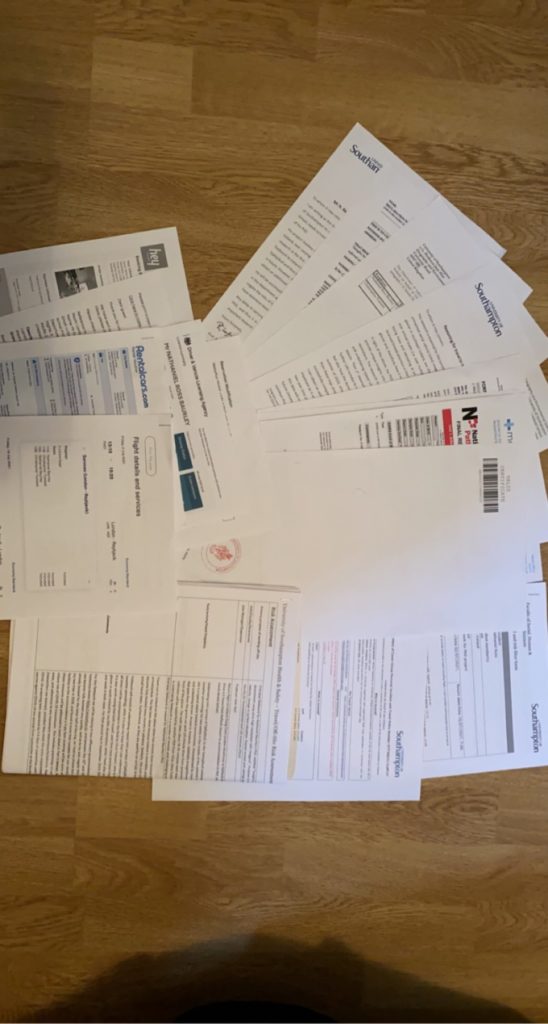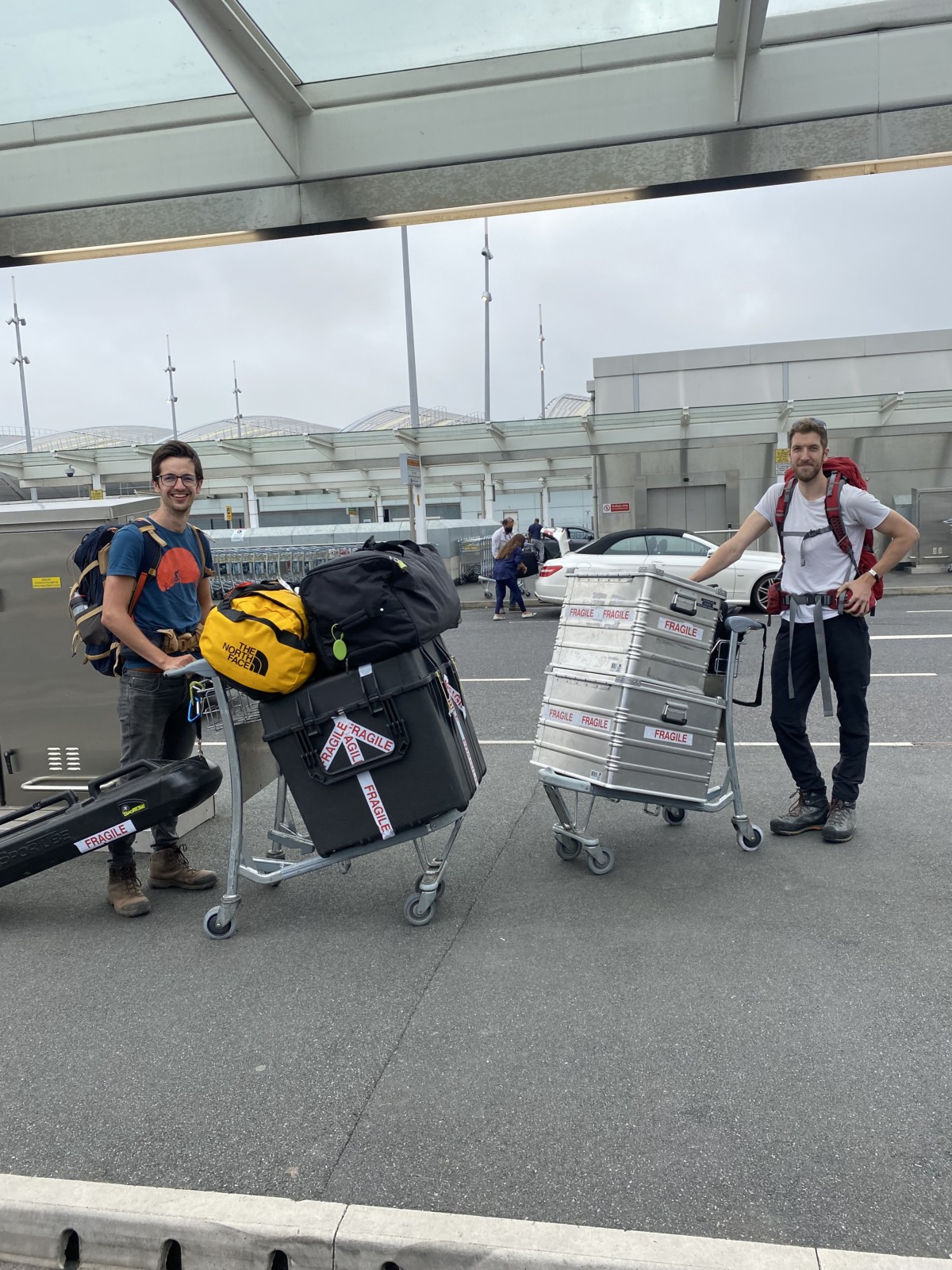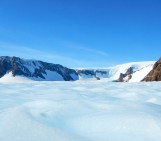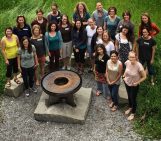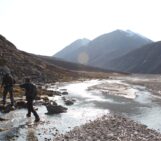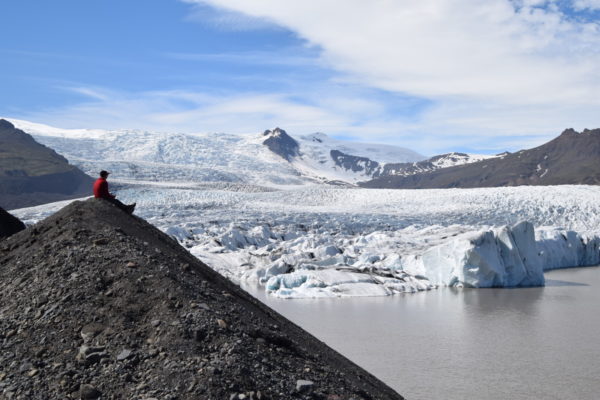
Have you ever wondered what undertaking cryo-fieldwork in a glacial environment typically involves? Well, what about undertaking cryo-fieldwork in a glacial environment during a global pandemic?! Read on to find out all about the challenges I faced on my recent trip to Iceland in July 2021…
Fieldwork Preparation
As this previous blog post highlights, undertaking cryo-fieldwork requires a significant amount of preparation and stringent planning to ensure it will run smoothly. During a global pandemic, however, the amount of preparation needed is far in excess of what would normally be required! In my case, for example, I needed to:
- Demonstrate that my fieldwork was essential and COVID-secure before it could be signed off by my faculty.
- Complete several exemption forms to allow entry at the Icelandic border.
- Book and undergo pre-flight COVID PCR tests.
- Order PCR tests ready for our arrival back in the UK.
This was in addition to the more standard preparation involved, such as applying for various research permits and booking the flights, accommodation and hire car for the two weeks in Iceland. Furthermore, imagine twice the amount of paperwork as it was not just me, but a colleague of mine, Chris Tomsett, travelling to Iceland. As a result, by our date of travel, I had amassed quite the mountain of paperwork! Even though I started these preparations many months in advance, I was still waiting to receive my final (and probably most important) piece of paperwork two days before we were due to fly, which was quite stressful to say the least! However, with the paperwork sorted, the final thing we needed to do was pack all our equipment into their respective cases (easier said than done) and we were ready to go!
Travelling Overseas
Having not travelled overseas for nearly 2 years, it was difficult to know exactly what to expect when we arrived at London Heathrow. However, we needn’t have worried as despite arriving 3 hours before departure, and with 6 large cases between us, the entire pre-flight process was actually very smooth and efficient (a welcome change to say the least). The only difference to travelling pre-pandemic was that we needed to wear a face-covering mask at all times.
Our journey through the Icelandic border once we arrived at Keflavik Airport, however, was slightly less smooth. As I was fully vaccinated at the time of travel, all I needed to do was to show my entry barcode and vaccination passport to be allowed through. Chris on the other hand, had only received his first dose, and thus had to present all his paperwork and take a PCR test before being allowed through. This also meant that he now had to quarantine for 5 days, which meant that I needed to as well. Although not ideal, I knew in advance that we would need to quarantine, and in the end it didn’t have much of an impact on our fieldwork. So, once through the Icelandic border, the only thing that remained was to pick up our hire car, squeeze in all our cases and begin the 5½ hour drive to our quarantine accommodation!
Quarantine!
In Iceland, travellers required to quarantine have the option of staying in state-funded facilities in and around the Reykjavik area, or they can pay to stay in one of the many self-contained, quarantine-suitable accommodations that can be found around the country. We opted for the second option, and were very lucky that we were able to quarantine in a small cabin in southeast Iceland, with views overlooking three of Vatnajökull’s outlet glaciers. The cabin was small (only 15 m2), but it had all the amenities we needed for the 5 nights there. Although we spent much of our time working (Chris and I are both PhD students after all!), we were allowed to go out for daily exercise as long as we didn’t come into contact with anyone. As such, we made sure to make the most of this time, e.g. by hiking to the nearby Fláajökull, which certainly helped stave off the cabin fever! Once Chris was invited to take his second PCR test (which came back negative), we were “released” from quarantine and the fieldwork could finally begin!

Chris, on one of our quarantine walks, and with the terminus of Fláajökull in the background, wondering whether he left the stove on in the cabin… Photo credit: Nathaniel Baurley.
Data Collection
My research involves using uncrewed aerial vehicles (more commonly known as UAVs or drones) to investigate the changes occurring at Fjallsjökull, a lake-terminating glacier in southeast Iceland over various spatial and temporal scales. In this fieldwork, we used an Inspire 2 UAV from Da-Jiang Innovations (DJI for short) to fly three surveys over Fjallsjökull every day (where possible) between the 8th and 15th July 2021. The UAV was equipped with a high-resolution camera which took photos of the ice surface every 3 seconds for the duration of each survey. These photos could then be processed together using a technique called “Structure-from-Motion Photogrammetry” to produce high resolution 3D models of the glacier surface. These models can then be used to tell us more about the velocity of the glacier (how fast the ice is flowing), how much the ice surface is thinning or thickening, how fast the glacier is retreating and how much calving is occurring (see here for a previous blog post on calving). These variables in turn allow us to understand the overall dynamics of the glacier (i.e. how it moves) and thus how it may respond in the future (pretty cool, eh?).

Out while surveying with the DJI Inspire. If you look closely, you may even be able to spot the UAV! Photo credit: Nathaniel Baurley.
Of course, to undertake these surveys, we actually had to be close to the glacier, which involved gaining access to it. This was easier said than done as we needed to walk up and down (un)stable moraine ridges to do so, all the while carrying heavy backpacks and a ~20 kg case of equipment between us! This in itself only took us ~30 min in the morning, but we also had to do the same at the end of the day…the hidden “perks” of fieldwork! In comparison, the actual collection of the UAV data itself was straightforward. All we needed to do was set up two base stations next to the glacier (to provide accurate positional information for data processing), set up the UAV and then fly the three 15 minute surveys (which were done autonomously using the UAV software). These surveys were then repeated every day (weather permitting) and have allowed for the collection of a large amount of high quality data, and although I am currently in the middle of processing it all, the preliminary 3D models I’ve produced look very promising indeed!
Along with these three surveys, we also undertook additional surveys of the glacier using a custom UAV system, based on the commercially-available DJI Matrice 600, but which had been modified by Chris to carry a compact laser scanner. Such scanners allow the ice surface to be imaged at extremely high resolution, and thus the use of UAV-mounted laser scanning may provide glaciologists with several new surveying opportunities, for example by allowing more accurate estimations of calving losses and changes in terminus position to be made. Excitingly, such a system had not yet been utilised in glacier fieldwork (to the best of our knowledge) and thus we are the first researchers to ever use a UAV-mounted laser scanner to undertake repeat surveys of a glacier terminus, which is really awesome.
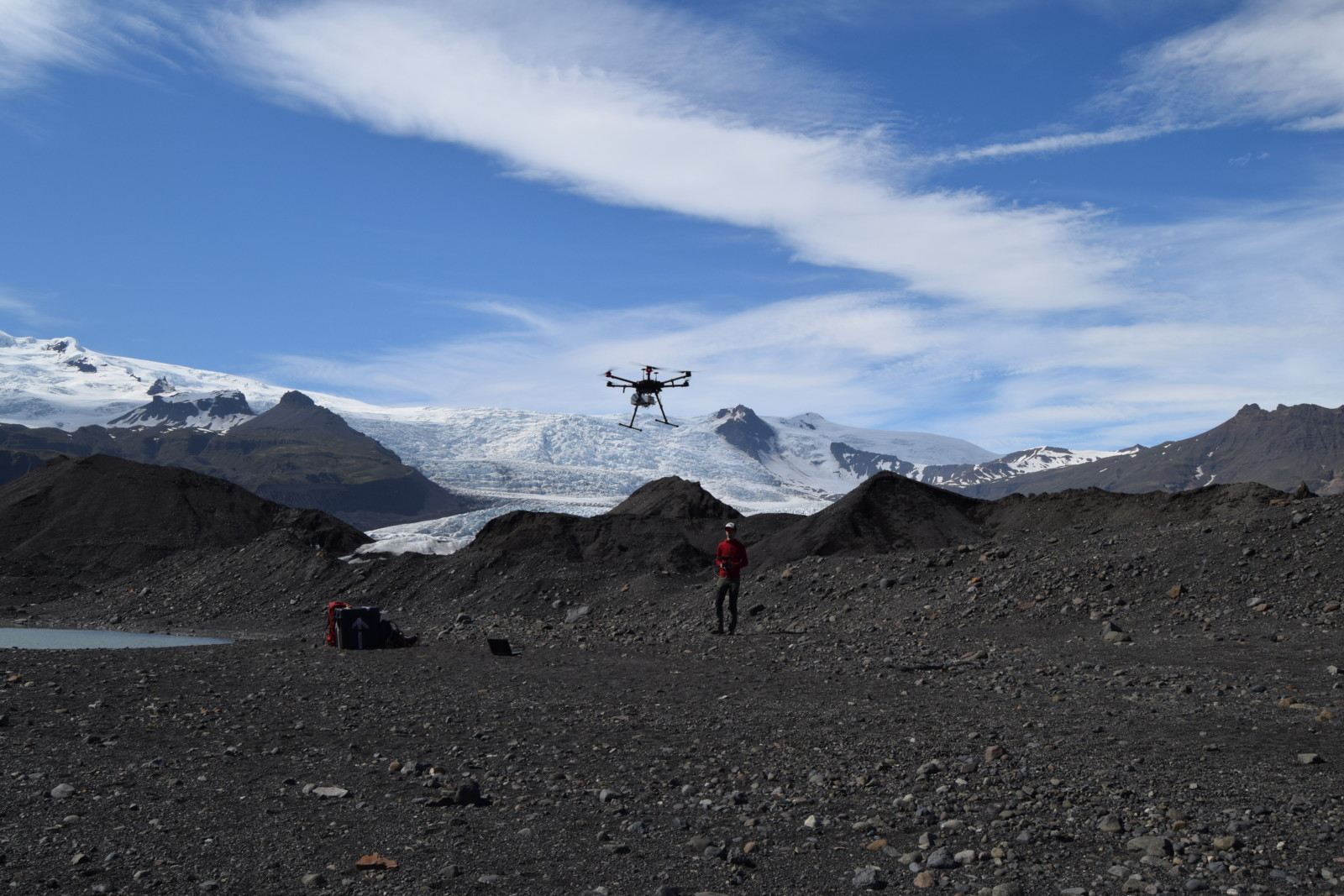
Chris flying the DJI Matrice (the laser-scanner is mounted beneath the UAV body). Photo credit: Nathaniel Baurley.
Sustenance
Fieldwork, of any sort, is tiring, energy-sapping work. However, cryo-fieldwork, and indeed cryo-fieldwork that involves lugging 20+kg boxes over unstable moraine ridges day after day, is particularly intense and tiring! Ensuring we had the right food to help prepare for, and recover from, a day in the field was, therefore, extremely important. For the most part, we lived off of cereal or porridge for breakfast, cheese and salad sandwiches and fruit for lunch, and tinned tuna with tinned tomatoes, tinned vegetables (e.g. peas/sweetcorn/carrots) and pasta/rice/couscous for dinner. Based on my previous trips to Iceland, this was the most cost-effective way of living while also still meeting our needs. However, there was one expense that we definitely couldn’t spare…Icelandic Skyr! This is essentially a very thick, creamy yoghurt that is unique to Iceland and which comes in a variety of (wonderful) flavours, such as crème brûlée, vanilla, dark chocolate and baked apple. Chris and I absolutely LOVE it, so much so that we each ate half a pot a night, which worked out at 14 pots between us for the whole trip. Perhaps slightly obsessive, but it kept our spirits up after a hard day in the field, and sometimes it’s these little things that keep you going during fieldwork!
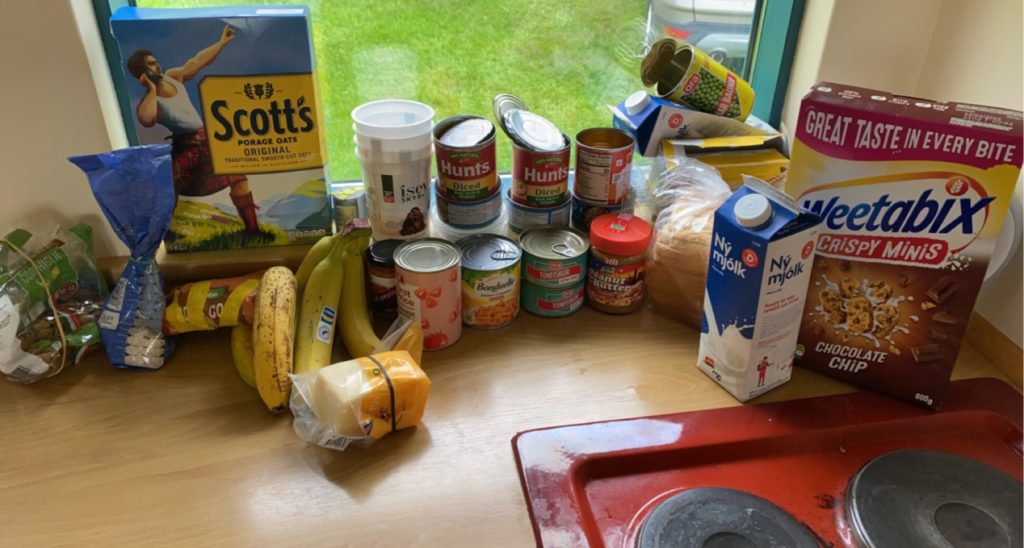
A selection of the food we ate during fieldwork (note the several pots of, empty, Skyr)! Photo credit: Nathaniel Baurley.
Returning to the UK
In comparison to the amount of paperwork needed to enter Iceland, all we needed to show at the airport check-in was proof of a negative PCR test that was taken within 72 hours of departure. Otherwise, our return to the UK, and passage through the border at London Heathrow, was smooth and hassle-free. Once I arrived back in Southampton, I was in bed by 8 pm and then slept solidly for 14 hours, which shows how much fieldwork can take out of you. However, if I had the chance to do it all again the following day I would have done so in a heartbeat! Overall, and despite the added obstacles of travelling in a global pandemic, I can confidently say the fieldwork was a resounding success. I hope this has given you some indication of what cryo-fieldwork is like, and if you have any questions or want to know more, please do get in contact!
Further reading
- Ryan, J.C., Hubbard, A.L., Box, J.E., Todd, J., Christoffersen, P., Carr, J.R., Holt, T.O. and Snooke, N., 2015. UAV photogrammetry and structure from motion to assess calving dynamics at Store Glacier, a large outlet draining the Greenland ice sheet. The Cryosphere, 9(1), pp.1-11.
- Smith, M.W., Carrivick, J.L. and Quincey, D.J., 2016. Structure from motion photogrammetry in physical geography. Progress in Physical Geography, 40(2), pp.247-275.
Edited by David Docquier and Marie Cavitte
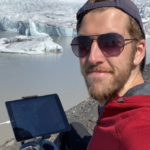 Nathaniel Baurley is a PhD Student at the University of Southampton, UK. He is investigating the changing dynamics of Fjallsjökull, a lake-terminating glacier in southeast Iceland, using UAV imagery. The high spatial and temporal resolution of UAV imagery offers new insights into glacial processes that often occur at scales so fine they cannot be mapped with traditional satellite imagery, allowing a greater understanding of how the dynamics of these glaciers may respond in future. He tweets as @nathr94. Contact Email: n.r.baurley@soton.ac.uk
Nathaniel Baurley is a PhD Student at the University of Southampton, UK. He is investigating the changing dynamics of Fjallsjökull, a lake-terminating glacier in southeast Iceland, using UAV imagery. The high spatial and temporal resolution of UAV imagery offers new insights into glacial processes that often occur at scales so fine they cannot be mapped with traditional satellite imagery, allowing a greater understanding of how the dynamics of these glaciers may respond in future. He tweets as @nathr94. Contact Email: n.r.baurley@soton.ac.uk

